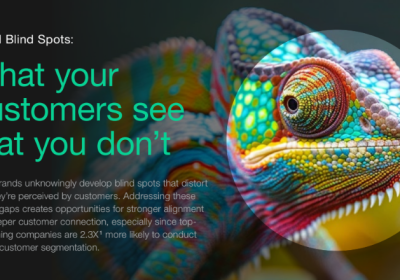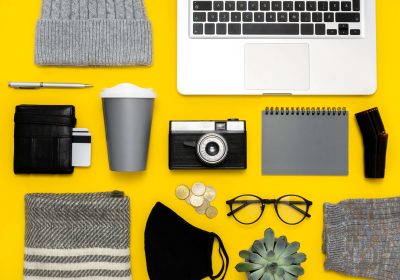The Psychology Of Booth Design: How To Attract And Engage Visitors
Imagine a bustling trade show floor, a sea of booths vying for attention. How do you make yours stand out? How do you transform it from a visual cacophony into an oasis that attracts and engages your ideal customer? The answer lies in the fascinating interplay between design and psychology – a potent force known as booth design psychology.
This isn’t simply about flashy graphics and loud music. It’s about delving into the human mind, understanding what triggers interest, igniting curiosity, and building connections. It’s about crafting a space that speaks not just to the eyes but to the subconscious motivations of your target audience.
In this article, we will explore how various elements of the booth design influence visitor behavior and decision-making processes.
Understanding The Audience
Understanding your audience is fundamental to the success of your trade show booth design. It involves gaining insight into who you are trying to attract, their needs, wants, and pain points.
According to Innovation-Village.com, the first step in this process is to identify your target audience and determine the most effective ways to reach them. This can be achieved through various methods such as surveys, interviews, and social media monitoring.
Analyzing data from industry publications and competitor research further refines this understanding. Segmenting your audience into groups enables you to tailor your booth design to resonate with specific demographics or interests.
Using Color Psychology
Color psychology is a critical component of effective trade show booth design, as it directly influences the emotions and behaviors of attendees. By understanding the impact of colors and considering cultural associations, exhibitors can strategically utilize hues to create captivating and memorable experiences.
According to I Blogs Hub, complementary colors, those found adjacent to the color wheel, can make booths stand out. For instance, fast-food restaurants often employ red and yellow to grab attention swiftly.
Contrasting colors are also effective for highlighting specific elements within the booth. Adding splashes of color to otherwise neutral backgrounds, such as incorporating blue and red stripes on flooring or banners, can attract attention.
Imaginative color schemes tailored to the brand identity and target market preferences foster comfort and engagement among attendees.
Bright colors like red and orange are powerful attention-grabbers, evoking excitement and potentially prompting impulsive buying decisions. However, moderation is key to avoid overwhelming visitors.
Warm colors such as red, yellow, and orange evoke enthusiasm, while cool hues like blue and green promote a sense of calmness and trust. These cooler tones are ideal for eco-friendly products or companies prioritizing reliability.
The Power Of Layout And Flow
ClassicMODUL notes that the layout of a trade show booth has a significant influence on visitor movement and engagement. Careful consideration is essential for concepts such as the “decompression zone” and intuitive flow, which are pivotal to success.
The decompression zone is the first few feet inside the booth entrance. It is a critical space where visitors mentally transition from the chaos of the trade show floor to the controlled environment of the booth. Here, clear branding, impactful signage, and strategically placed focal points can captivate attention and draw visitors further into the space.
Intuitive flow refers to the logical progression of movement within the booth, guiding visitors seamlessly through different zones or experiences. A well-designed layout ensures easy navigation and encourages exploration, maximizing visitor engagement.
Custom aluminum extrusions play a crucial role in facilitating this process. These versatile materials allow for the creation of custom structures and displays tailored to the booth’s unique layout requirements.
Whether it’s creating modular walls for delineating different areas or constructing eye-catching product showcases, aluminum extrusions offer flexibility and durability.
By strategically integrating custom aluminum extrusions into booth design, exhibitors can optimize layout and flow. To learn more about how custom aluminum extrusions can elevate your trade show booth design, visit www.classicmodul.com.
Creating Focal Points
Focal points serve as visual anchors that draw attendees into the booth and guide their exploration of the space. These points of interest can take various forms, including eye-catching displays, interactive demos, or striking signage. Strategically placing focal points at key locations throughout the booth will help exhibitors effectively communicate their brand message.
The significance of creating focal points lies in their ability to command attention and facilitate engagement. In a bustling trade show environment, where attendees are bombarded with stimuli, having prominent focal points helps booths stand out amidst the noise.
To maximize the impact of focal points, exhibitors should consider factors such as relevance to their target audience and alignment with brand identity.
Crafting Experiential Brand Engagements
Connecting with a global audience requires brands to think beyond the traditional confines of grandiose trade show booths and press conferences. The trend has shifted towards crafting engaging, experiential events that capture the essence of the brand while offering unique, memorable experiences for attendees.
Flashy booths may grab attention, but it’s the creative, interactive experiences that truly resonate with visitors, yielding higher returns on investment (ROI).
According to Forbes, innovative approaches, such as interactive product demos or thematic experiences tailored to the event, significantly enhance booth attractiveness. For example, incorporating a sommelier and wine glass maker at a wine-themed conference can draw crowds. This will also encourage social media sharing and extend the brand’s reach beyond the event itself.
Strategic engagement with media and influencers, through personalized invitations to events or one-on-one interactions, can further elevate brand presence. Equally important is having adept personnel at the booth, ready to interact effectively with visitors and media, ensuring the brand’s message is conveyed cohesively.
In conclusion, the journey through the psychology of booth design has hopefully equipped you with valuable tools to captivate your audience. Remember, your booth is an extension of your brand, a handshake in the physical world. By harnessing the power of color, layout, and interaction, you can transform it from a mere space into an unforgettable experience.
Don’t underestimate the impact of small details. From the warmth of inviting lighting to the thrill of interactive displays, each element plays a role in shaping visitor perception. Remember, people buy from people they connect with, and your booth design plays a crucial role in forging that connection.
Read Also:






